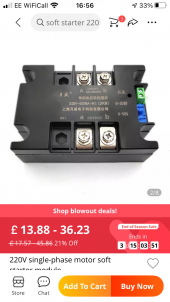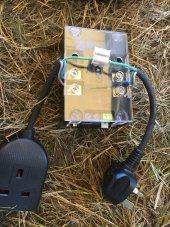mike95490
New Member
- Joined
- Apr 16, 2021
- Messages
- 78
You need more battery, or a higher battery voltage. 12 & 24 v systems have huge DC surges with starting motors which gives voltage sag before the inverter.
Super Caps are wrong idea, just another expensive component needing a big expensive fuse for when they expire.
That said, i used a simple timer on my freezer for 2 years till i upped my PV capacity . Manual defrost only, frost free systems often initiate a defrost cycle at power up.
Super Caps are wrong idea, just another expensive component needing a big expensive fuse for when they expire.
That said, i used a simple timer on my freezer for 2 years till i upped my PV capacity . Manual defrost only, frost free systems often initiate a defrost cycle at power up.






